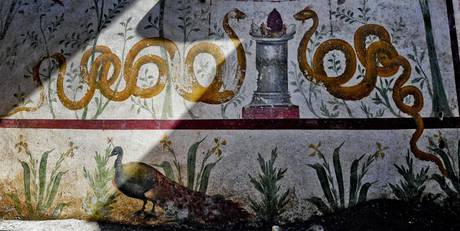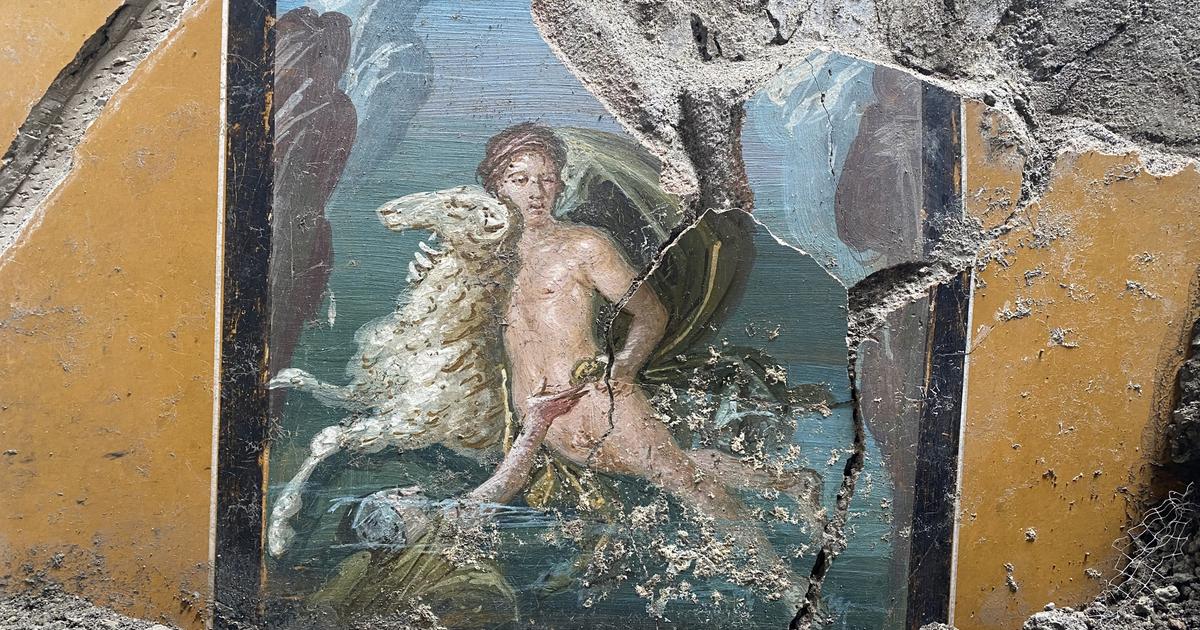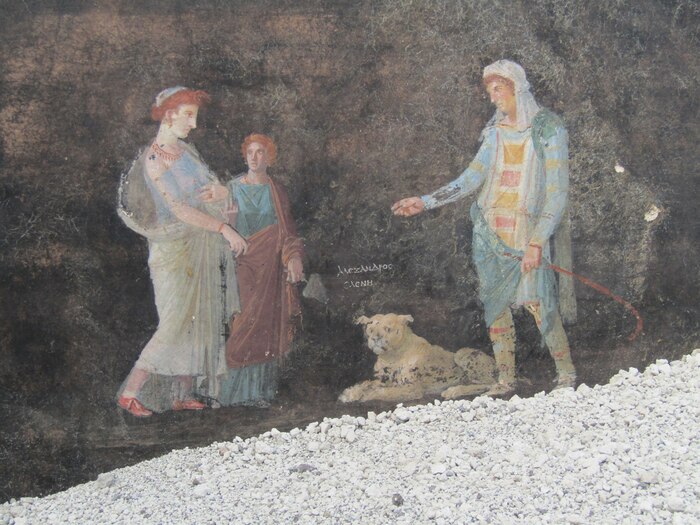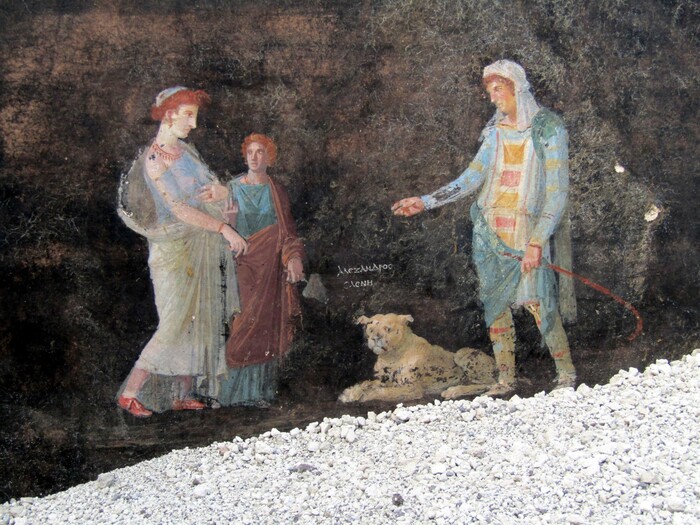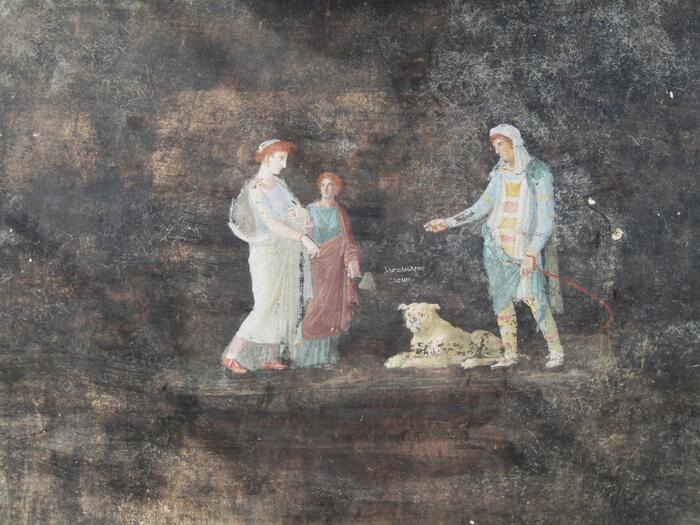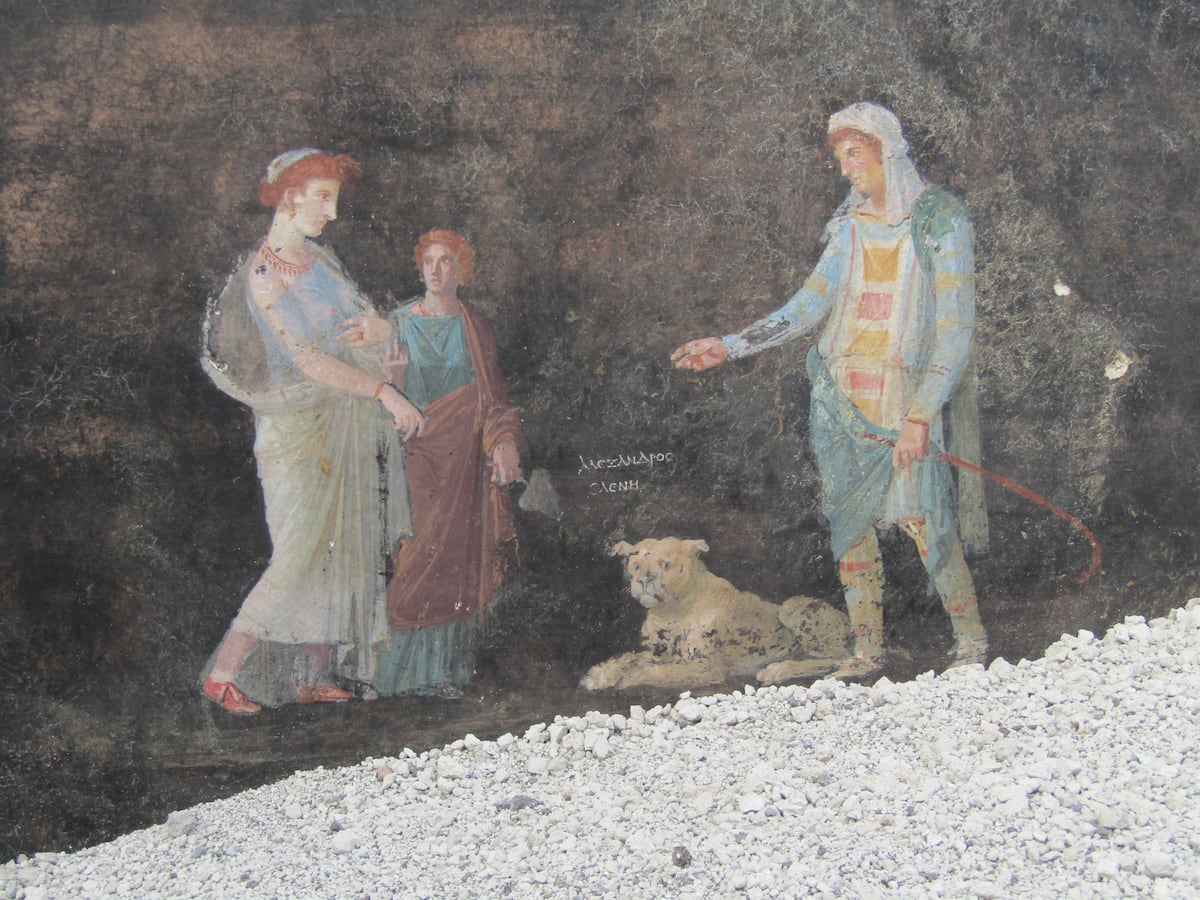In one room a closet remained closed for two thousand years with all its set of crockery
inside, glass saucers, ceramic bowls, vases.
In another, a table still set with its furnishings, a bed, a chest.
In Pompeii one digs in the back of the "enchanted garden"
, the amazing space painted with the large lararium that was unearthed in 2018, and surprisingly, where an important and sumptuous house was expected, modest but full of dignity environments come out, where there is no shortage of refined objects and even a bundle of documents that the plaster cast has made incredibly reappear.
Environments that tell the life of the lower middle class of the city,
explains the director of the park
Gabriel Zuchtriegel
, "people who often lived in rent and in any case on the margins of the more affluent classes".
In the city of Campania that from 80 BC had become a Roman colony, this was a very widespread situation, he stresses, "A reality that concerned a large part of the population, yet up to now little documented and told".
Faced with the wonder of the outside with the large and sinuous snakes and ferocious beasts that make a fine show of themselves in the refined lararium, the walls of these rooms that
ANSA was able to preview
they are plastered but bare, without a trace of paint.
How bare is the floor, in simple beaten earth.
There is no shortage of services, however, a kitchen and a latrine, almost like those found in the most important homes.
"It was possible to have the courtyard adorned with the lararium and the tank for the cistern with exceptional paintings, but evidently the means were not enough to decorate the five rooms of the house", comments the director.
THE SURPRISE
We are in Regio V, in that wedge of land in which the excavations of the Great Project were carried out in the past, made necessary by the safety of the World Heritage site.
A step away from here, on the same street, is the palace of Marco Lucrezio Frontone, with its walls frescoed in an extraordinary third style, the atrium with marble and the impluvium, the large garden with the magnificent peristyle.
"The discovery of these rooms behind that incredible lararium was a surprise, but this is precisely the reason why it is important to dig further", reasons the general director of museums Massimo Osanna, who in 2018 was at the helm of the park and in charge of the project. of excavations.
"The investigations that are being carried out are valuable because they help us shed light on the story."
And it was precisely to light a new lighthouse on the events of the city and on those last devastating hours of 79 AD, says Zuchtriegel, that it was decided to resort to the technique of casts, as it was a few months ago for the slave room of the villa of Civita Giuliana.
Here, too, the plaster made the furnishings reappear, the trunk for precious things emptied in a hurry, even if not completely,
since on its bottom you can still see a lamp, a saucer, a strip of fabric.
And then again, the pillow left on the bed, the beams collapsed on the furniture, even in an upstairs room, a pack of 7 tablets, perhaps contracted, held together by string and sealed with sealing wax, as was done at the time with documents.
"For Pompeii this cast is unique", points out the director.
In Pompeii the closet that was closed two thousand years ago reopens
THE CLOSED WARDROBE FOR 2000 YEARS
On the ground floor, partially broken by the collapse of the attic, there is a cupboard-sideboard, really exciting, if you think that it has been closed with its trousseau for over two thousand years.
Inside it, dishes, glass and dishes have remained stuck, which will now be freed with a micro-dig.
Then they will be cleaned like all the many objects found here and there in the various rooms: a delightful painted perfume burner, a bronze jug with a small refined sphinx head, a large basin, also in bronze, left on the table in one of the rooms.
Objects that join the dozens and dozens of more minute finds, such as the metal locks on the door, the wardrobe hinges made with animal bones, the small bread grinders for home use, the wood leaning against the wall in what it appears to have been a deposit.
The director looks around, his gaze falls on the bright colors and vibrant figures of the lararium: "We do not know the inhabitants of this house, but certainly the culture of idleness that inspired this wonderful decoration was more of a dreamed future for them than a lived reality ".
SOON YOU WILL BE ABLE TO VISIT
The idea, meanwhile, anticipates Zuchtriegel, is to work on a project for the safety of the rooms so that they can be opened to visitors, with a path that leads from the splendor of the house of Lucretius Frontone to the bare walls of this house, which perhaps once - before the earthquake of 62 BC - it had been the residence of a notable, then dismembered and occupied by a less wealthy family.
"An extraordinary team work, a beautiful story of redemption, Pompeii never ceases to amaze", comments Minister Franceschini.
Even more, perhaps, with this glimpse into a more modest yet at times incredibly current everyday life.

